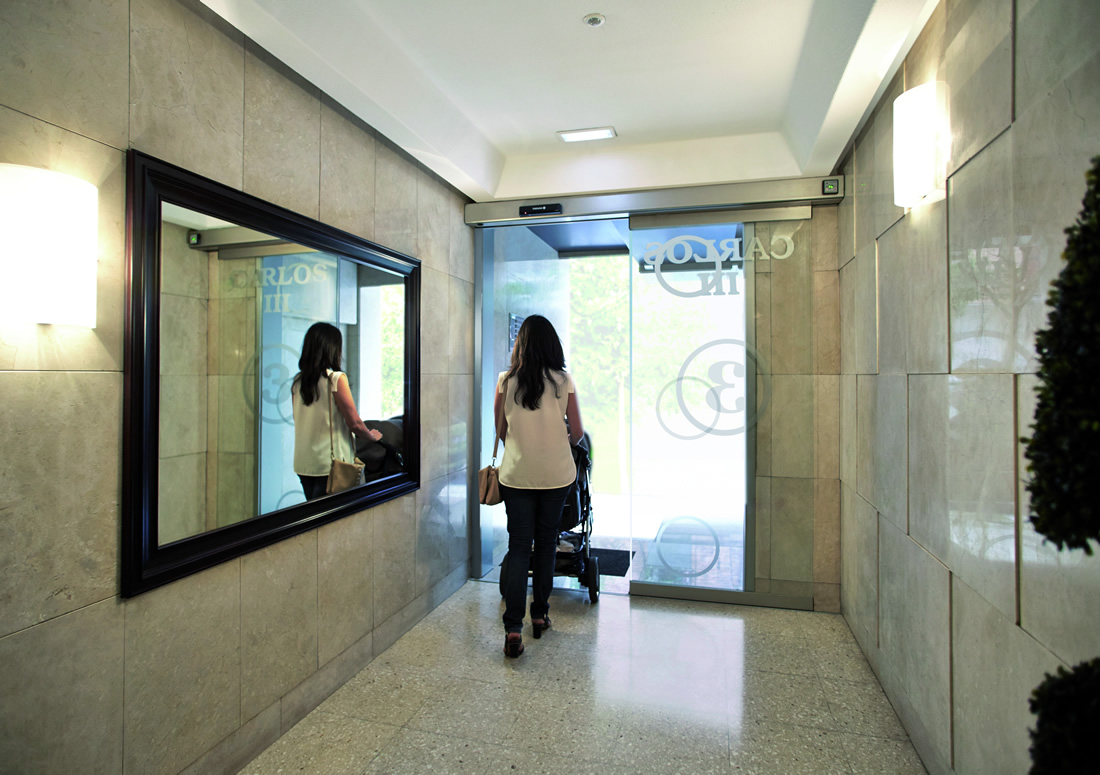Innovation and design
Automatic doors in communities of residents. Much more than security

When we refer to the communal areas of a neighbourhood, we always think of the areas of the lift, the entrance, the meter rooms, or the irrigation system, if the community of residents has gardens. The entrance and exit doors of the building are also important, whether they are the main doors, the secondary doors, or the garage doors, for example.
Many residential areas now tend to be automated, which means that mechanisms can be activated by remote control, programming activities, or making things happen by mobile phone. Although it is true that technology is not as advanced and not such a high degree of implementation is reached in every home.
With regard to automatic doors, it is always said that it is important for safety reasons. And it is true that this type of system ensures our homes are safe from undesirable intrusions. Accessories such as photocells, safety switches or access control systems are implemented in many neighbourhoods to keep them safe when the owners are away from home working or are on holiday for a few weeks.
Automatic doors for entrances
There are also elements associated to automatic doors that make life easier for the tenants of communities of residents. For example, drive controls; a system that we are used to seeing in offices, shopping malls or restaurants, and that are also very convenient in accesses to residential complexes.
Buttons can be added to these, either hand or elbow activated. We normally use them to switch on the lights in the corridors of communal areas in the stairway. Incorporating them to open doors is a very good idea and makes the flow of people easier.
And a very recommendable accessories for properties with several buildings belonging to a housing cooperative or community of residents is the entry and exit control, as computer systems are used to control all accesses and doors. Without a doubt, a 21st century convenience for communities of residents that is one hundred percent technological.
